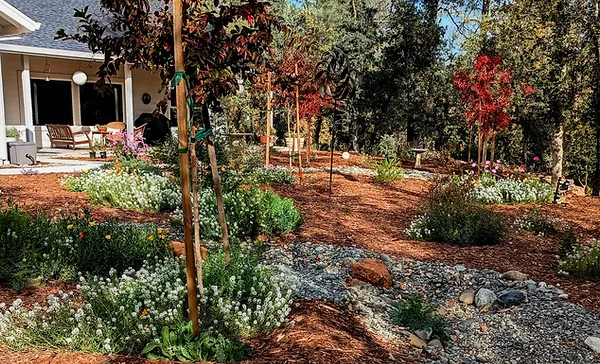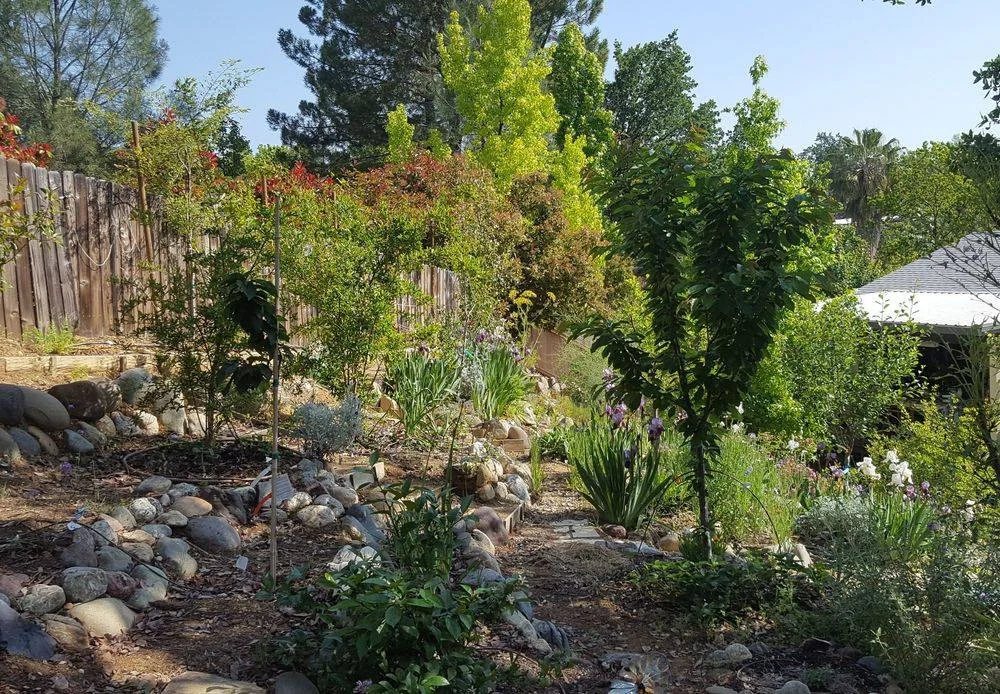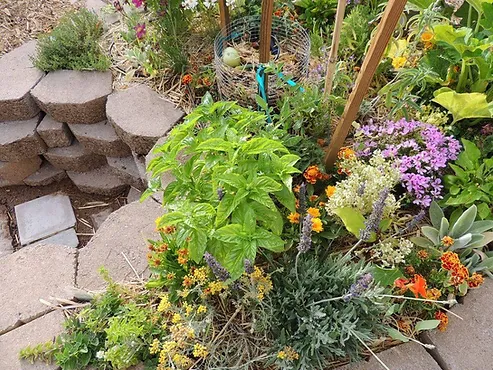Diversified Planting

Drought-tolerant landscaping with edible perennial plants just makes sense. The right plant at the right place for the right reason at the right time is the key. With proper planning and design, you can grow fruits, nuts, herbs, and veggies at home using less water than maintaining a lawn.
Food Forests

By adding perennial fruits and vegetables with herbs and annuals to your orchard you can stack the functionality of your space, save water, create microclimates, and increase the production of your garden. Adding native plants and flowers that attract pollinators and predatory insects provides a more ecological balance to your landscape.
Edible Landscapes

Food not Lawns is a movement to replace the traditional high-maintenance lawn with perennial and annual fruits, fruiting shrubs, and vegetables to create an attractive, and productive landscape that uses less water, eliminates expensive maintenance, fertilizers, and the CO2 emissions from gas power tools.
Irrigation

Saving water in these uncertain times of drought and climate extremes is a top priority in our designs.
Conserving water not only saves money but is environmentally beneficial for our planet.
Water equals life and every drop counts.
Drip irrigation systems are effective and conserve water, they target where the water goes and control the quantity.
Adding an irrigation timer ensures you are watering efficiently and can be adjusted to seasonal changes.
Installation

Planning your installation by starting with irrigation and hardscape elements ensures greater success.
We use guidelines recommended by UC Davis, creating square-shaped planting holes three times the diameter of the container, encouraging root expansion rather than continuing the circling pattern they have adapted to in nursery containers.
With a slight firming of the surrounding soil, we let water and gravity remove any air pockets from the root zone reducing soil compaction.
Corrective Pruning
Neglected and improperly pruned trees and shrubs are a common problem in traditional landscapes.
It can take years to restore a poorly pruned or neglected tree.
No more than 30% of foliage should be removed at a time. In some cases, this can be done twice a year when done properly. Dead diseased and dying material can be removed at any time.
Some fruit trees can be pruned twice a year for improved production the following season.
Target Pruning can reshape shrubs that have been abused with powered shears over time.
Many designs use shrubs where they can not develop their natural form and need continuing maintenance.
Proper spacing and plant selection reduce upkeep costs and let the plants achieve their true form and beauty.